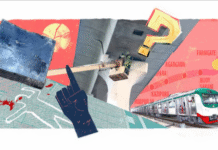Barrister Harun ur Rashid
AFTER the massive victory of BJP leader Narendra Modi, it is natural to discuss what kind of relations the new BJP government will have with Bangladesh. Will there be a qualitative change or business as usual, or accelerated engagement with Bangladesh? The Bangladesh prime minister reportedly took the first diplomatic initiative by congratulating Modi over telephone and writing a letter inviting him to make Bangladesh his first destination when he went abroad, and to make Bangladesh his “second home.”
Since 2009, the Sheikh Hasina government has been building a stronger bilateral architecture with India in almost all sectors. The government moved quickly to address Delhi’s concerns on cross-border terrorism (including expelling top Ulfa insurgents to India) and promised connectivity to the North-East. Cooperative efforts are continuing from both sides to implement many projects and programmes in economic, social and infrastructure, especially under the supplier’s credit of $ 1billion loan to Bangladesh by India (out of which $200 million was later converted into grant).
Both Bangladesh and India benefitted from this partnership. However, there is a perception that India got more than what Bangladesh received from India. The question is whether the Modi government will not only resolve the pending issues but also enhance the relationship with Bangladesh. Modi’s commitment to bring about economic recovery and create jobs can only be executed when peace prevails inside India and with its neighbours. Bangladesh is a huge market for India, which could be one reason for the Modi government not to disrupt the existing relations.
It is believed the Modi government, with its huge majority in the parliament, can resolve the pending issues. However everyone knows that issues or disputes between Bangladesh and India directly involve the Indian states of West Bengal, Assam, Tripura, Meghalaya and Mizoram, and the Modi government needs to seek their views, particularly when the states are not ruled by the BJP.
Modi, being a former chief minister of Gujarat state, knows very well about the fissures between the states and the centre. He wants to empower states with full responsibility for the lists of subjects under their jurisdiction, and work with them to resolve issues both within the country and with neighbours. One of the diplomatic steps is to craft stronger cooperative government-to-government links with the neighbouring Indian states to better coordinate the breadth of Indo-Bangladesh issues.
For example, Bangladesh has more than 4,096.70 km land border with West Bengal (2216.70 km), Assam (263.00 km), Meghalaya (443.00 km), Tripura (856 km), and Mizoram (318 km). Bangladesh is a lower riparian of 54 rivers flowing from these states.
The states have their own domestic political dealings with the centre and also within the state, and reaction to any agreement with Bangladesh by the New Delhi government could be either negative or positive. The most glaring illustration has been the non-implementation of the Teesta Agreement signed in 2011 because of the opposition of West Bengal’s chief minister.
Bangladesh diplomats need to know before signing any agreement with the national government whether the centre has taken on board the state concerned to implement the agreement. Second, Bangladesh also may ascertain from independent sources the views of the concerned state about the proposed agreement. Another major diplomatic move for Bangladesh is to vigorously pursue areas such as water, energy, food security and environmental degradation through the 2011 Indo-Bangladesh Framework Agreement on Cooperation and Development. Furthermore, Bangladesh may move diplomatically to demonstrate that because of its geographic location, the country can be of immense value for India in terms of security and enhanced economic growth in the northeastern states.
Bangladesh may play a proactive role in integrating the economies of Bangladesh Bhutan, Nepal and northeastern states of India. They could be constituted as a sub-regional economic group, sharing their resources for mutual benefits. In that context, Bangladesh may diplomatically persuade India to adopt a regional policy where all its small neighbours are on board for the benefit of the region.
It appears that Mamata’s Trinmool Congress has become stronger politically than before with the increase in the number of MPs. It is felt that she opposed the Teesta Agreement because her state does not get enough water from Sikkim. Modi may persuade Sikkim to release more water to West Bengal and consequently make it easier to implement the Teesta Agreement with Bangladesh. BJP’s majority in the parliament makes it easier for India to ratify the Land Boundary Agreement with exchange of enclaves.
The results of the diplomatic steps by Bangladesh government may hinge on BJP’s assessment of whether political stability will continue in Bangladesh after the non-inclusive January 5 election. BJP wants peace and stability in Bangladesh; otherwise it may have an adverse impact on India.
There are many unknowns about Modi and it is hard to predict anything at this stage. Bangladesh faces tough diplomatic challenges in dealing with the Modi government. Finally, the two countries are destined to live next to each other. Therefore, I firmly believe that there is no reason why Bangladesh-India relations should not be mutually supportive and friendly as both should fight together the common enemy — extreme poverty — existing among people of both countries.
Source: The Daily Star










